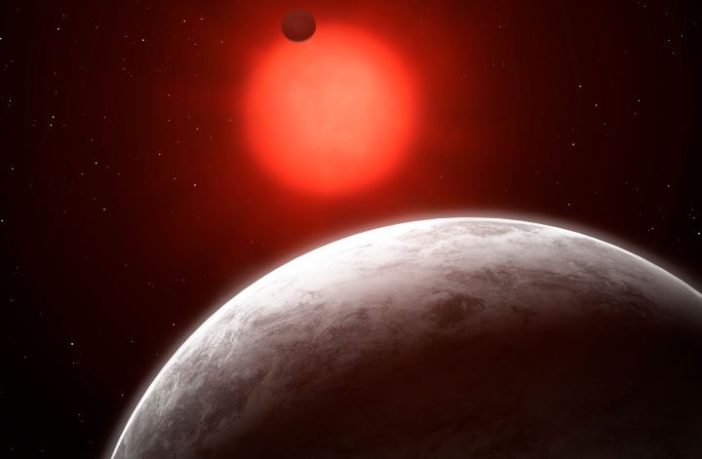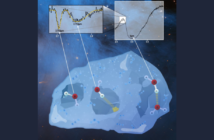A system of super-Earth planets – possibly rocky worlds, but larger than Earth – has been detected orbiting the nearby star Gliese 887.
An international team of astronomers, including Professor Carole Haswell and Dr John Barnes of The Open University, made the discovery as part of Red Dots, a project to detect terrestrial planets close to the Sun.
The brightest red dwarf star
Gliese 887 is one of the closest stars to the Sun with a distance of 11 light years. It is the brightest red dwarf star in our sky, about half as big as the Sun. Gliese 887 is much dimmer than the Sun, so the habitable zone, where water can exist in liquid form, is closer to Gliese 887 than Earth’s distance from the Sun.
The two new planets, Gliese 887 b and Gliese 887 c, were found using the High Accuracy Radial Velocity Planet Searcher (HARPS), a high-precision planet finding spectrograph, on the European Southern Observatory’s 3.6m telescope at La Silla in Chile.
Prior to the discovery, astronomers made projected estimates that led the space science community to believe that red dwarf stars may typically harbour more than one planet – in other words planetary systems, which is confirmed by this study.
Star Trek…more fact than fiction?
Professor Carole Haswell, Head of Astronomy at The Open University, said:
“As a child in the 1960s one of my favourite TV series was Star Trek. It really makes me grin that the more we find out about our local Galactic neighbourhood, the more the Galaxy seems to resemble the one in Star Trek. It seems that stars generally host systems of planets. As we find out more, it is beginning to seem like only a matter of time before we find planets that are truly Earth-like.”
Red Dots found the tiny back and forth wobbles of the star caused by the gravitational pull of the planets. The two planets, Gliese 887 b and Gliese 887 c, orbit their star every 9.3 days and 21.8 days respectively, much faster than Mercury’s orbit around the Sun. If these planets reflect a similar amount of starlight to Earth, Gliese 887 c, with an orbit of 21.8 days, has an estimated temperature of 70oC, slightly hotter than Earth.
Star provides hospitable conditions
Research findings showed that Gliese 887 is a very inactive star. In contrast, we know that the Sun has strong stellar winds – outflowing material which can erode a planet’s atmosphere. The atmospheres of planets as close to their star as Gliese 887 b and Gliese 887 c would be swept away if the star was active. However, Gliese 887 is less active than the Sun, so these planets could retain their atmospheres and potentially host life. Though Gliese 887 c receives more starlight than the Earth receives from the Sun, it could have a thicker atmosphere due to the inactivity of the central star.
Due to the inactivity of the star, it will be relatively easy to detect the atmospheres of Gliese 887 b and Gliese 887 c. So, Gliese 887 will be a prime target for the James Webb Space Telescope, a successor to the Hubble Space Telescope due to be launched next year.
Dr Sandra Jeffers, of the Institute for Astrophysics, Goettingen University, said:
“I am very excited to be leading the team that is detecting the exoplanets orbiting our closest stellar neighbours. These planets will provide the best possibilities for detailed studies including searching for evidence of life outside the Solar System.”
Red dots project
Guillem Anglada-Escude, of Institute for Space Science in Spain:
“Red Dots is the continuation of Pale Red Dot. It significantly contributed to Barnard´s b and detected another very nearby multi-planet system (GJ1061). It has important contributions from pro-amateur observers who observe the star while the large telescope measures the star’s wobble.”
In addition to the two new planets, in 2019, the Red Dots project announced a system of three planets orbiting another nearby red dwarf. So far, a total of seven planets orbiting four of the nearest stars to the Sun have been discovered by the team.
For more on the research findings, read the paper published in the Science journal.



